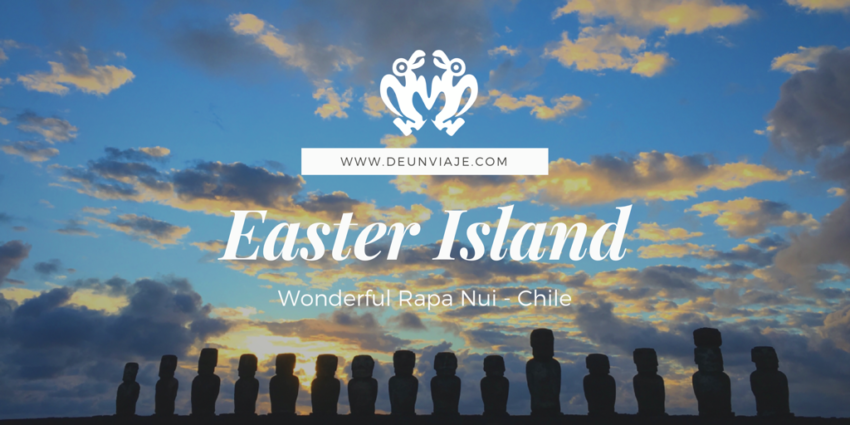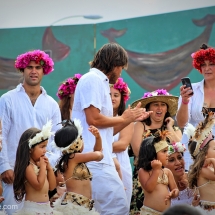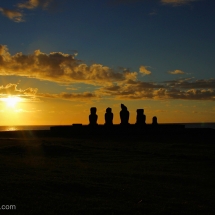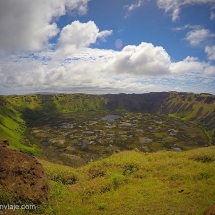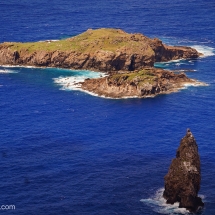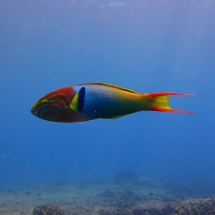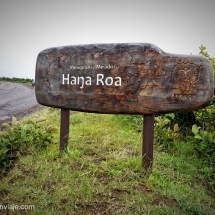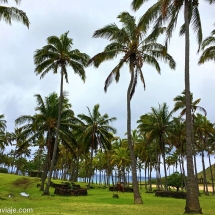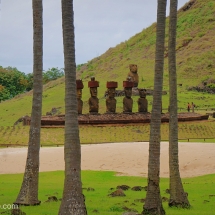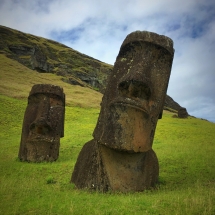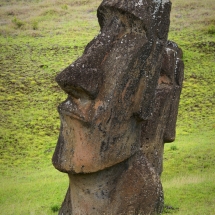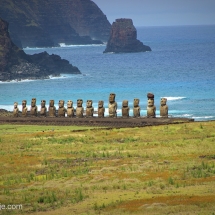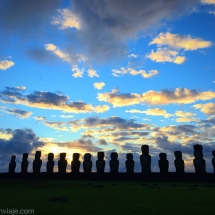Rapa Nui is one of the most remote places on the planet. Maybe that’s why is so special. The first habitants named the island: Te Pito o Te Henua: The belly button of the world. Is located at 3.526 kms from continental Chile, almost a 6 hours flight from Santiago.
Rapa Nui was discovered by accident in 1722 by a Dutch explorer Jacob Roggeween, for Easter Festivities. Everyone wants to see the huge and immobile Moais, but Easter Island is more than that, a paradise for whom is looking stunning landscapes, beautiful culture and advertures.
What do you need to know…
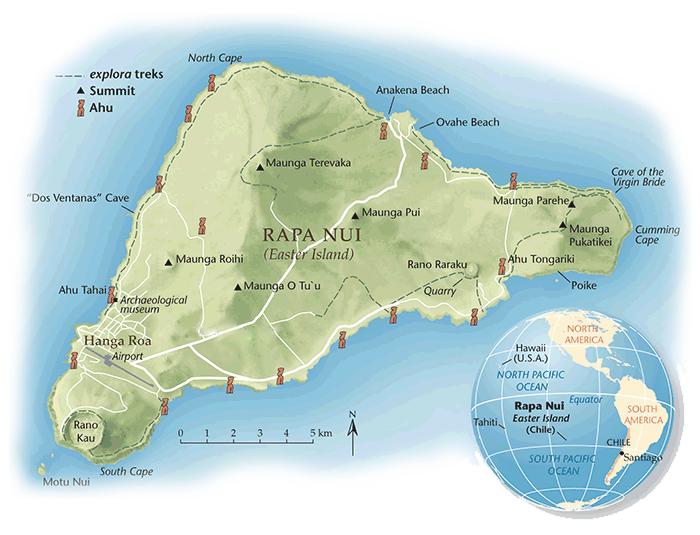
Rapa Nui is literally a “triangle floating in the sea”, located 3.576 kms to the Chilean coast and 4.000 kms from Tahiti. It is an island of volcanic origin, with three large extinct volcanoes in each vertex.
The only town is Hanga Roa, an harmonic village with a sea view and almost 4.000 habitants that speak Spanish and the local language. You can find most of hostels, hotels, restaurants, markets and other services in Policarpo Toro Avenue. From there you can visit the two only beaches of the island: Ovahe and Anakena.
Rapa Nui has a rainy tropical weather, with very warm temperatures, but despite this, the island has a small variety of vegetation. This Polynesian land named by UNESCO World Heritage site, shows to the travelers beautiful untraditional landscapes and a rich culture.
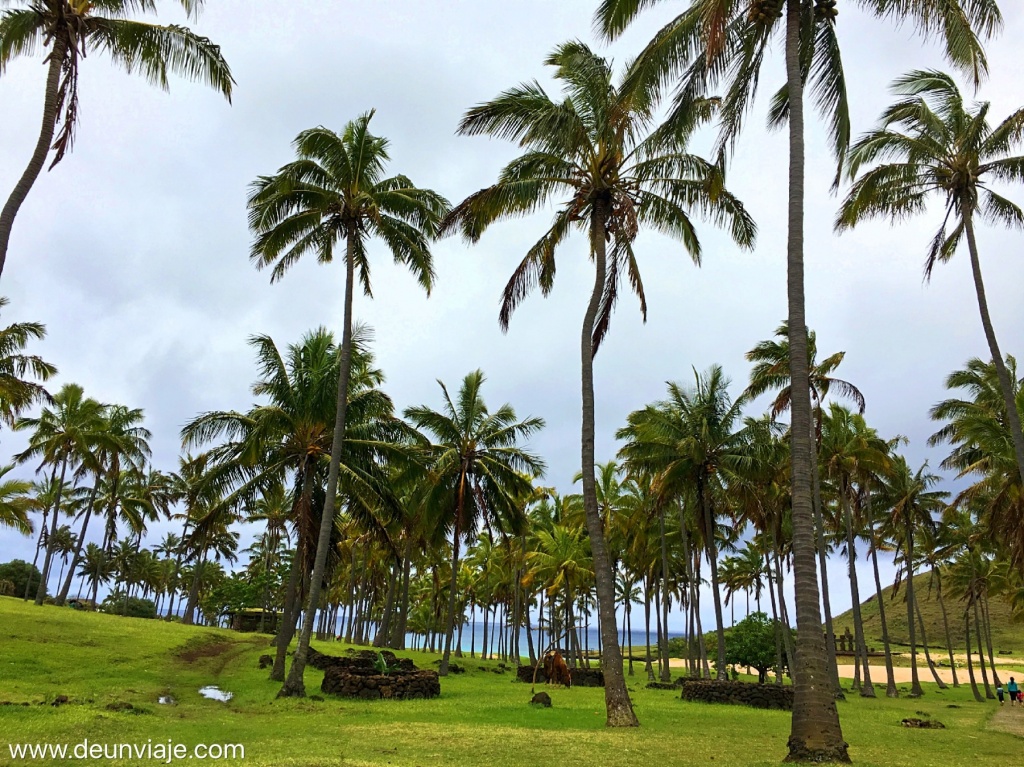
To preserve Easter Island’s cultural heritage, especially the Rapa Nui National Park, there are a few simple rules that must be respected at all times during the visit:
- Do not touch any archaeological remains.
- Do not stand on the platforms or Ahus.
- No driving outside of the marked trails.
- No camping is allowed within the National Park.
- Respect all signs and markings on the sites.
The breach of any of these rules is subject to heavy penalties. Park rangers carry cameras and the fines applied are quite expensive, so it is important to be aware and be careful.
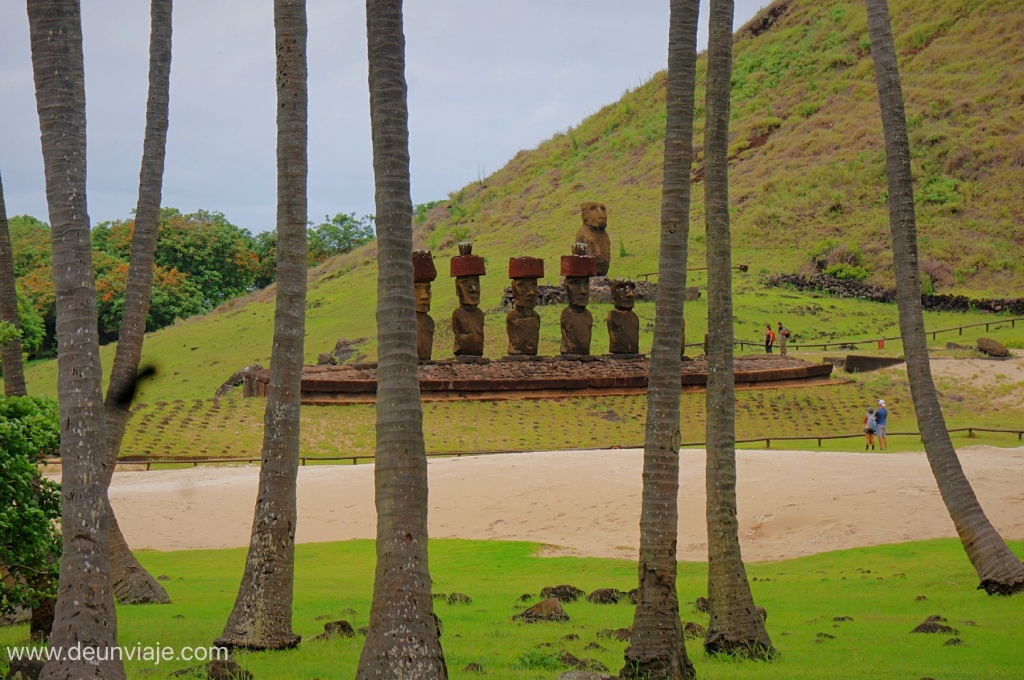
CONAF office operating hours:
April to November: 09:00 to 18:00
December to March: 09:00 to 19:00 (Orongo and Rano Raraku close their barriers)
Entrance Fee
New rates from January 1st, 2017:
- National Adults: $ 20.000
- National children: $ 10.000
- Foreign Adults (any age): US$ 80
- Foreign children: US$ 40
Tickets can be purchased at the ticket office located at the Mataveri Airport entrance gallery, during flight arrival times, at the central office located at Atamu Tekena Street (next to the Cruz Verde pharmacy) or at the Provincial Office Of the CONAF located in Mataveri.
The entry has a duration of 10 days, from the first timbre of control and can be inspected anywhere in the Rapa Nui National Park, so it is recommendable to carry the ticket with you always.
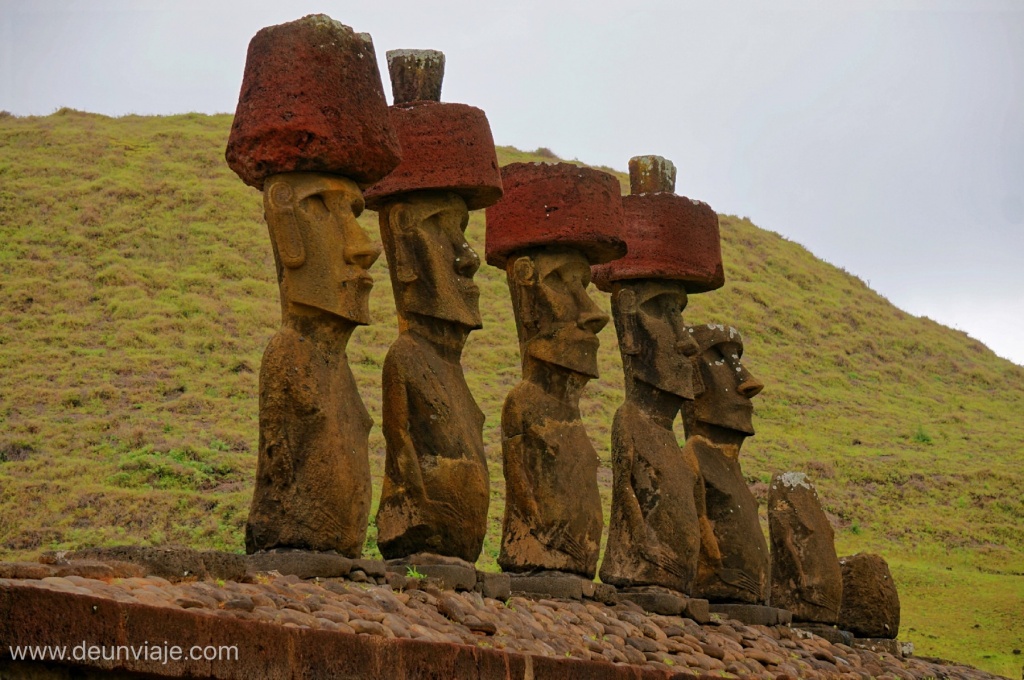
How to get there
By Air: the best way is traveling by plane with LATAM airlines, they have flights everyday. The trip take six hours to the Mataveri Airport.
By Sea: is more difficult to get a ticket, you need to contact to the Chilean Navy (Armada de Chile) to get a ticket.
Polynesian Dances and Parties
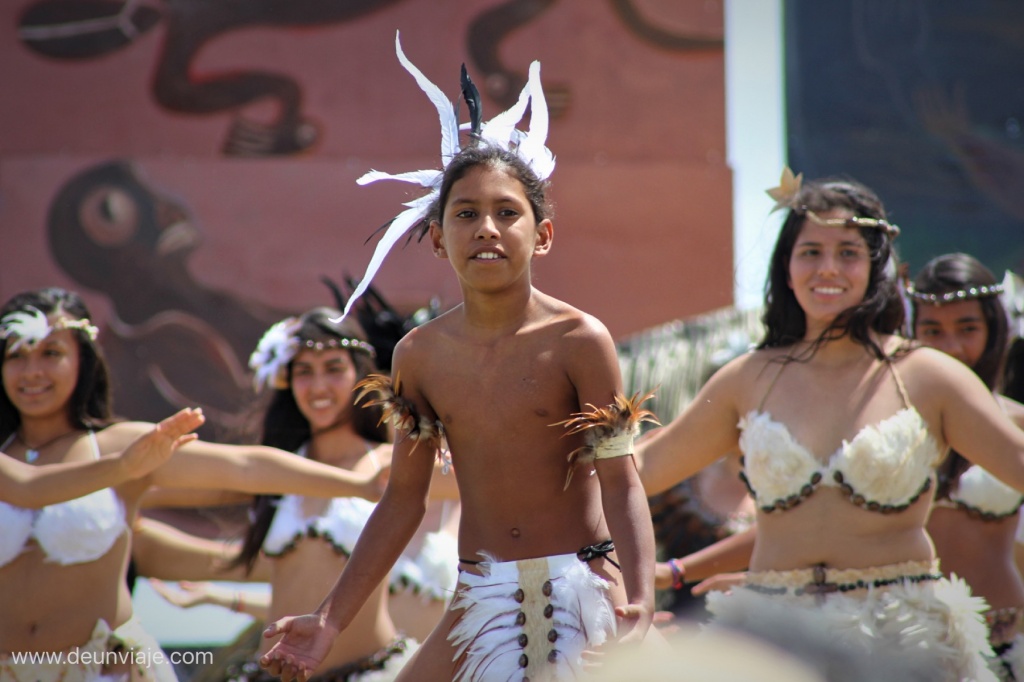
The traditional Polynesian Dances represent scenes of the history of Rapa Nui People.
Kari Kari:
This ballet rescue the traditional culture of Easter Island, showing peculiar rhythms and sounds.
When: Tuesday, Thursday and Saturday 9:00 PM
Where: Atamu Tekena s/n
Tapati Rapa Nui:
If you are planing to travel the first two weeks in February, you can enjoy this particular party where everyone is invited. During this festival the people choose a queen and compete with dances, traditional songs, marathons, fishing and Haka Pei (downhill in trunks through the volcano). You can taste the local food and celebrate wearing traditional costumes.
Every traveler needs to make an anticipated reservation and the prices go up on those dates.
Ahus, Moais and petroglyphs

Nobody knows it for sure, It is estimated that the year 300 AD arrived at Rapa Nui a tribe of Polynesian explorers led by the king Hotu Matu’a who would have visualized the island in a dream. The silent secret of the past are the Moais: 900 sculptures carved in compact ash that watch the horizon and the island. Part of the adventure in Rapa Nui is to visit these sites, 400 Moais are in the quarry of the Rano Raraku volcano.
Akivi:
This Ahu is located in the slopes of the volcano Maunga Terevaca, looking out towards out the Pacific Ocean, the Moais in there represent the seven explorers who colonized the island.
Tahai:
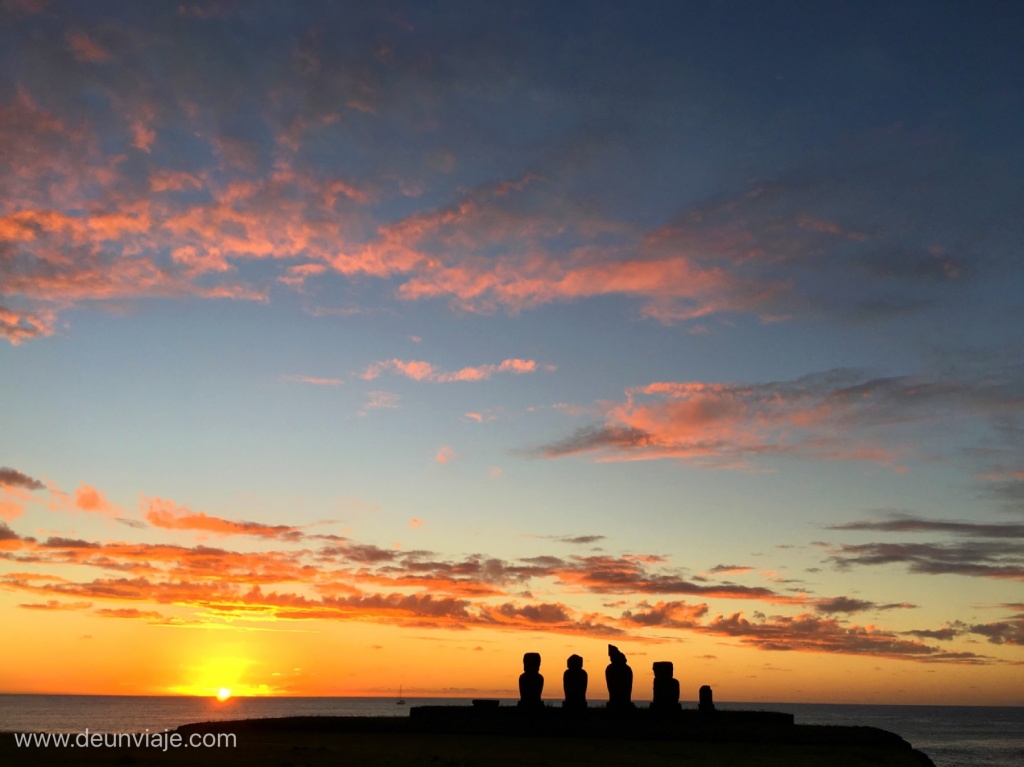
Is the best restored place on the island and you can get there by walking. You must go there and sit in the best spot to enjoy the sunset in the island.
Tongariki:
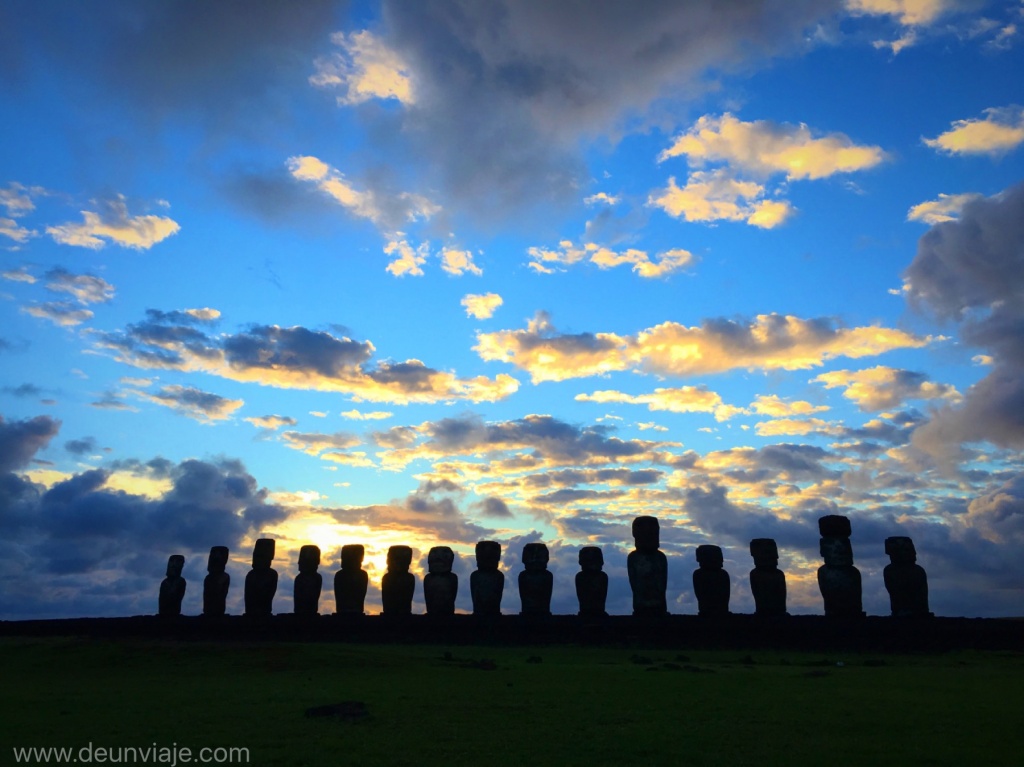
This spectacular megalithic monument was destroyed by a tsunami in 1960, it was rebuilt and now has 15 Moais on a 160 meters long ceremonial platform. It’s located 20 kms from Hanga Roa and you can get there by road that runs along the east coast. If you are an early riser, you can enjoy a beautiful sunrise in Tongariki.
Rano Raraku:
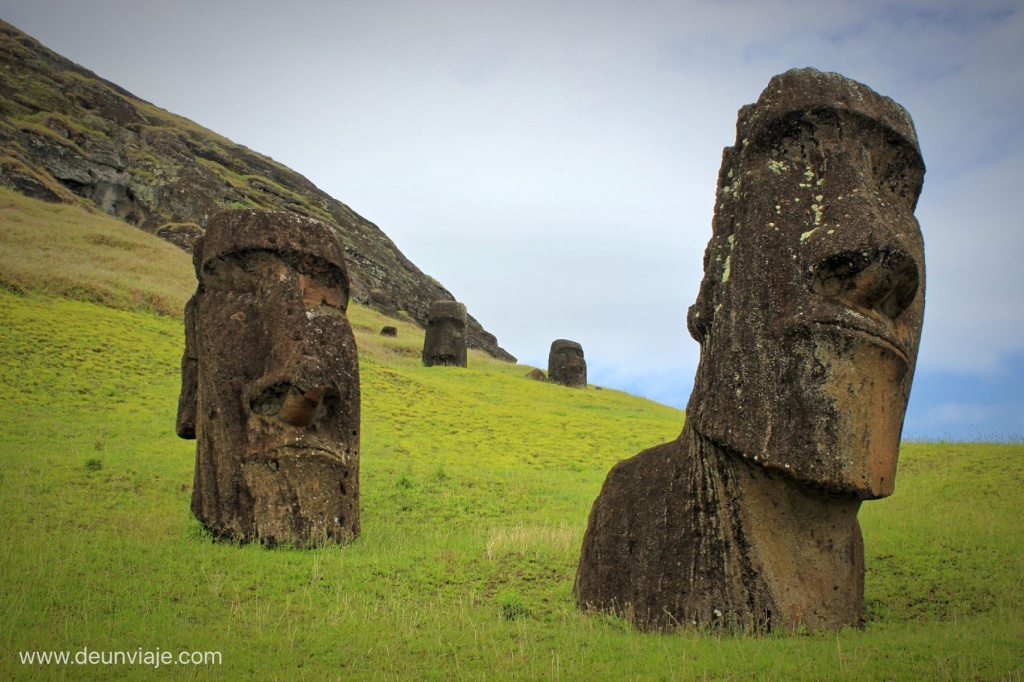
Literally is the “Moai Factory”, that’s why is the most mistic place in the island. The enormous Moais in the quarries of this volcano is a perfect place for pictures and enjoy the this fascinating ancestral culture.
Definitely, Easter island is a place you need to visit once in your life.


